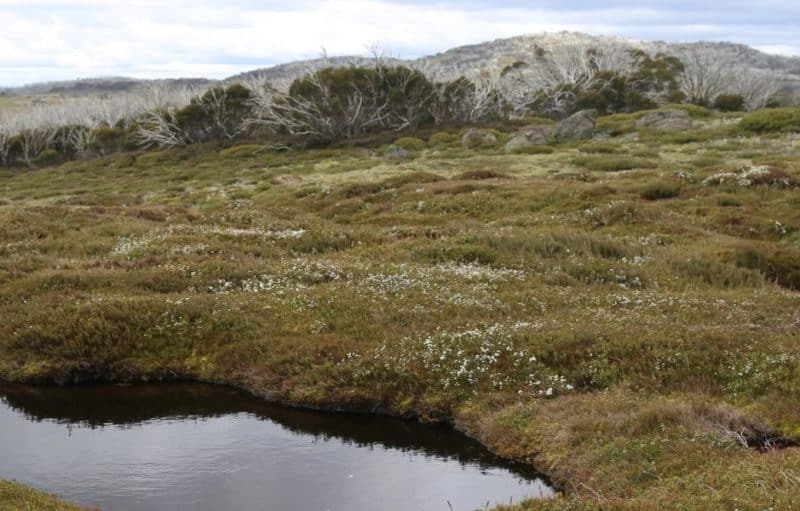PARK WATCH Article December 2021 |
It’s been a tough journey, but Victoria now has a real plan for alpine recovery, says Parks Protection Campaigner Phil Ingamells.
Nature conservation is largely about contested territory, and the battle for Victoria’s high country has been no exception.
Since well before 1974 when the Victorian National Parks Association published Dick Johnson’s remarkable book The Alps at the Crossroads, we have fought for a substantial Alpine National Park, fought to have licensed cattle grazing removed from the park, and more recently campaigned to have management of the high country – and the rest of Victoria’s parks system – properly resourced with both expertise and funds.
One of the most difficult problems in that journey has been that the high country is one of those places where impeccable evidence is routinely confounded by entrenched assumptions, where the truth is undermined by community ignorance or, unfortunately, outright mischief.
The Alpine National Park’s feral horse population (about 5000–6000 in Victoria with an additional 20,000 in Kosciuszko National Park over the NSW border) has been the subject of the most recent of those battles.
I remember one moment when a brumby advocate, invited by Parks Victoria to be a privileged member of an alpine horse advisory panel, assured the group that a scientific paper said horses improve the diversity of birds in grasslands. It turned out to be an Argentinian paper, and it actually said the opposite: horses trample nesting sites in that country’s extensive Pampas plains.
That’s a small problem, perhaps, but the relentless feral social media campaign that has personally targeting individuals, including park staff whose only crime is to call for evidence-based management of a national park, is no small matter at all.
Parks Victoria’s final Protection of the Alpine National Park: Feral Horse Action Plan, released recently, sets up a decade-long management program that has the capacity to reverse the declines in alpine ecosystems brought about by the expanding feral horse population.
It will aim to remove all horses from the Bogong High Plains, and reduce the main population in the eastern part of the park by up to 500 in the first year. Rehoming will be the first option, with ground shooting and then aerial shooting considered to be the most humane method of controlling the remaining animals.
Brumby running, the control method championed by many horse supporters whereby wild horses are rounded up, roped, then trucked or driven out of the park before ending up in a knackery, is not supported by animal welfare advocates and won’t be allowed in the future.
The plan is the result of many decades of scientific study, and involved years of consultation with the broad community, brumby support groups, cattlemen, animal welfare experts, Aboriginal communities and ecologists. Along the way Parks Victoria has also had to defend its plan in a series of cases in the Supreme and Federal Courts, each of which resulted in unambiguous support for Parks Victoria’s intentions to control these feral animals.
We congratulate Parks Victoria in its pursuit of a plan that has real integrity, and we congratulate the Victorian Environment Minister for her unwavering support for that endeavour. We also congratulate our members for their crucial support for the long campaign to restore the ecological integrity, and the great beauty, of the Alpine National Park.
Now all we need is to get the NSW Government to control horses over the border. And, yes, we need to make sure the plans for managing all hard hooved animals are resourced well into the future.
Did you like reading this article? You can read the latest full edition of Park Watch magazine online here.
Want to be kept up to date about this and other nature issues in Victoria? Subscribe to our email updates.
You can also receive our print magazine Park Watch four times a year by becoming a member. Find out more here.
